|
Recently and as part of my solo exhibit, There, There: Healing Dolls as Solace in an Off Kilter World, January 19-March 2, 2019, at the WAS Gallery in Bethesda, MD, I participated in a panel discussion on the state of fiber art in the larger world of art. It was an interesting and wide-ranging discussion, moderated by the curator, Joumana Moukarim. Blair Murphy, curator at the Arlington Art Center also participated in this panel discussion. Murphy had just curated a fiber art exhibit, Over, Under, Forward, Back, at the AAC, January 12-March 30, 2019. I will include some of my observations from the AAC exhibit and artist talks in this article. I appreciated the chance to hear what many artists who use fiber as materials in their work had to say in both venues. This article is an attempt to share and reflect on some of the ideas that came up. For the purposes of this article I will use the term fiber art to describe both fiber and textile art. Erika Cleveland, WAS Gallery exhibit There, There: Healing Dolls as Solace in an Off Kilter World, January-March 2019, photo credit Pete Duvall My dilemma as a healing doll artist, fiber artist? I sometimes wonder about how to present myself as an artist. I am a healing doll maker and yes, I am a fiber artist but I feel like that doesn’t fully describe the range of what I do. A doll maker can use a wide array of media: sticks, wire, wood, clay, porcelain, even cornhusks or apple cores. It is just that I happen to like making dolls using wool, with a technique of poking a barbed needle into the wool. I show my work in venues that seek fiber artists but also sometimes in venues where fiber art is more of a second thought. While fiber art is starting to be more recognized in the larger art world and even sometimes celebrated, it can still feel challenging to find my niche in that world. So the question of fiber art’s place in the larger art world felt to me like a very timely topic for discussion. I’m not sure if any of what I share here will answer any questions. Perhaps more importantly, it will open up useful discussions. The discussions I attended and took part in certainly helped me to clarify my own feelings about why I do what I do and hopefully this article will do the same for you. detail Erika Cleveland, Your Task is Not to Seek Love, But to Remove the Barriers that Prevent You from Receiving Love, Wrap doll with sticks, fabric and mixed media, 2019, photo credit, Pete Duvall Why do I use fiber as a medium? At the WAS panel discussion, Joumana asked me to describe why I am a fiber artist, why did I choose this medium? I talked about how I am drawn to the tactile quality of sculptural needle felting, and the way in which the surface created by needle felting feels as close to human skin as I could get. The tactile and meditative quality of the process of working with wool, the slow poking of the needle repeatedly into the wool, was also something that drew me to this medium. The curator then asked me what I thought of the way Mark Jenkins (in a recent Washington Post article about the solo show at the WAS Gallery) described my work in his article for the Washington Post as “playfully grotesque.” My answer-his comment describes my work well, in that my work sometimes comes from a dark place but this darkness is always offset by playfulness. His comment, with its contrast between playful and grotesque also echoes the dichotomies that exist in all my dolls, especially the flip dolls. 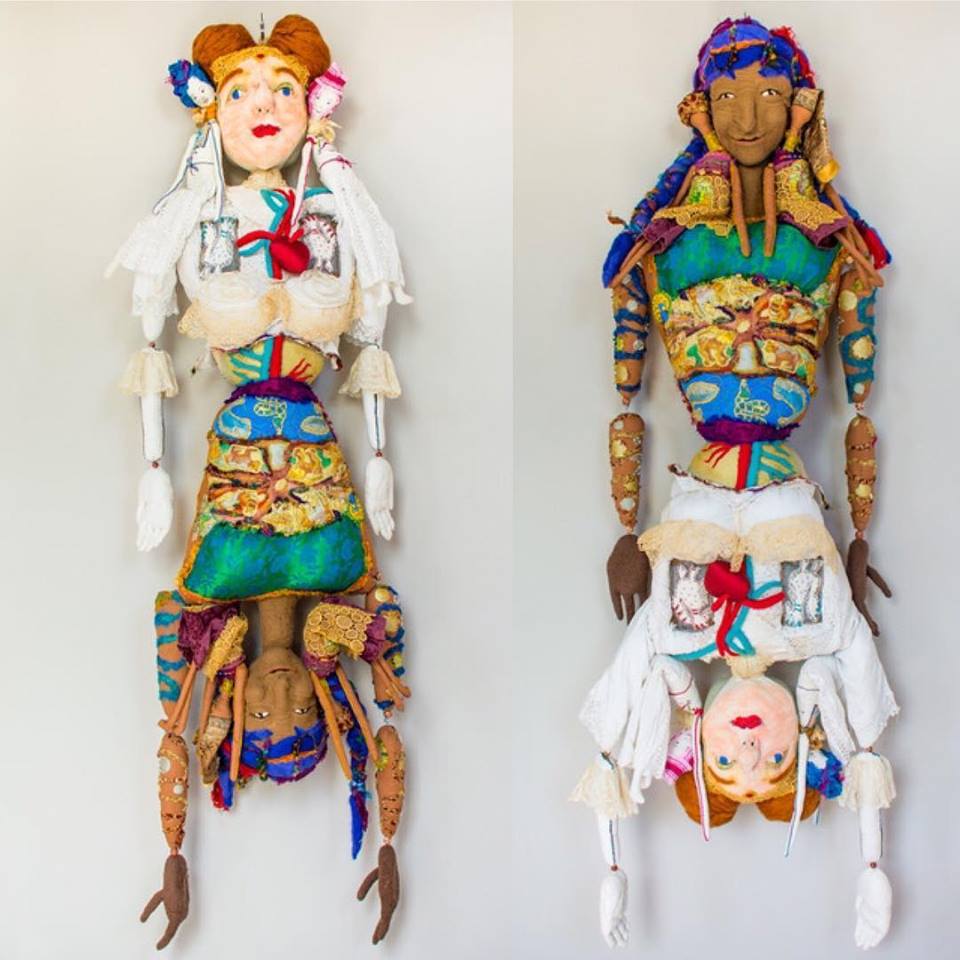 Two sides of Erika Cleveland, Rhea, Mother Earth/Raina, Every Woman is an Empress, Sculptural needle felted and mixed media, 49 x 20 x 11, 2016 Is the recent upsurge of mainstream exhibits of fiber art a “flash in the pan?” Joumana then referenced the current resurgence of interest in fiber art, given that there have been several fiber art shows in DC now or recently, and asked, “is this recent resurgence of fiber art exhibitions a flash in the pan or is this going to continue?” She turned to Arlington Arts Center’s curator Blair Murphy first, asking about her, Over, Under, Forward, Back show, which featured twelve artists who use fiber in their work. Joumana asked how Blair chose artists and what themes the AAC curator saw in this show. Blair answered, “the way we find artists for shows is a combination of artists submitting work to our two open calls and my own research and outreach…For the two thematic exhibitions we do every year (which includes the recent fibers show, Over, Under, Forward, Back) I invite artists to participate based on my vision for the exhibition. I try to keep up with going out to see new work in the DC area and further afield to find new artists. I also keep up with different artists, organizations, and galleries on Instagram and will often seek out artists for studio visits after I've seen their work on that platform. Our two open calls provide a way for me to find new artists for our thematic shows as well - there are often artists who might not be selected for SOLOS or the biennial, but I'll do a studio visit with them and potentially include their work in one of our other exhibitions if I think it's a good fit.” Themes in the AAC fiber art exhibit In answer to the question about themes, Blair said,“it's important that the artists are really mastering the techniques, they're really committed to the craft and the process. And then from there, they're thinking about how to use them differently than intended. Sarah J. Hull is a good example of this trend - she's participating in a certificate program with the Royal School of Needlework but is really interested in thinking about embroidery in the context of contemporary art and how to experiment with the techniques she learns.” In addition, she sought artists whose response to the specific material of fiber art both informed their work and led to more universal themes. “Artists are exploring broader themes and those themes are often tied to the material itself. So Steven Frost's weavings incorporates recycled material related to his personal history (like old middle school t-shirts) or to broader political history (pink material leftover from pussy hats from the Denver Women's March in 2016).” She also sought artists who combined fiber art techniques in unique ways, such as the way Raina Hassan combined woven techniques of metal-infused threads, connected by these threads to paintings. Some of the artists combined ancient art forms such as weaving with recent technology. “One of the interests in technology in relation to fibers comes from the historic connections between the two. Robin Kang, another artist in the show, is interested in the historic ties between weaving and contemporary digital technology. The punch card system that Jacquard invented for his loom inspired the punch card systems that were used in very early computers. The memory cards of very early computers often had hand woven copper cables on them. So this material that we think of as very traditional and ancient also has connections to very contemporary technology. Robin works on a TC-2 Digital Jacquard Loom, which integrates digital technology. My understanding of the loom is that the initial design and setup is done digitally but then she's still manipulating the weft by hand, which allows her to alter and manipulate it as she's weaving.” I am glad that I got a chance to see the Over Under exhibit before it came down, and to hear the artists whom Blair had described speak about their work. There were many overlaps between the discussions at the two venues, for instance, artists at both described how fiber art leads naturally to collaboration and mutual support, such as the sharing of techniques among artists. The AAC seems to be exceptionally receptive and open to fiber art as a venue for their exhibits. I was lucky to have had an exhibit there several years ago, in collaboration with Stacy Cantrell. We had our community based exhibit, featuring our large scale crocheted and needle felted figures, Materialized Magic: Mythical Creatures in a Yarn Artistry Habitat that venue. This receptiveness does not seem to always be the case, as seen in some of the comments by panelists in the WAS gallery discussion. Rania Hassan, Tangle, Oil, fiber, wood, 2017 (a version of this piece was shown at the AAC) Resurgence of Fiber art shows in the mainstream as part of #MeToo and #BlackLivesMatter At the WAS gallery panel discussion, Stacy Cantrell, artist and independent curator, addressed the question of whether the current interest in fiber arts will continue. She pointed out that feminist movements, such as the #Me Too and #Black Lives Matter can also bring a resurgence of interest in fiber arts. She said that she “wants to ride out this trend as long as it lasts,” but noted that she often encounters challenges when submitting her work to shows that are inclusive of a wide range of media. Often, she says, there is a lack of knowledge on the part of the juror or curator, as to what fiber art is exactly. She has found that she has had to educate curators or jurors about fiber art in order for them to be able to fairly compare her work to that of other media such as painting. Challenges of educating mainstream curators about fiber art Other panelists, such as independent curator, Trudi Van Dyke remarked about the difficulties of finding venues for fiber art. She represents several fiber artists and works to find appropriate venues for group exhibitions that focus on contemporary fiber. She feels that there is and continues to be a bias against fiber art and an unwillingness for galleries, museums and collectors to pay enough attention to this genre. She also concurred with others on the panel that it is often a lack of knowledge that may be impeding presenting more fiber exhibitions. In her role as a judge at fine art festivals she takes the opportunity to educate others about fiber art, both traditional quilting and contemporary mixed media and how to critique and appreciate it. Linda Syverson Guild, architecturally inspired quilt-maker, commented, “the rubric that measures fiber art is constantly in flux. The best we can do as fiber artists is strive to educate the general public and move as a whole toward increasing their exposure to our type of art in the world, hopefully moving into the galleries alongside and hopefully be measured by the same rubric as art that has survived centuries. SAQA (Studio Art Quilt Associates) of which she is a member, is working toward this goal and unified under its umbrella, we are finding places to present our art to the world with pride. Because there are organizations like SAQA, I can answer, yes fiber art is more than a trend.” Linda also said, “I posted the question ‘ Is fiber art a trend—or is it here to stay?’ to a group of fiber artists. They offered the best explanation for approaching the question of main streaming fiber art: consider the fact that frequently a painter begins with fiber, we do the same thing, the paint we use to make our art is also fiber.” Linda Syverson Guild, Following the Leader, 20 inches square. My response to Trump’s election, referencing the Disney movie Peter Pan and the song the children sing, ‘We’re following the leader…wherever he may go.’ That song echoed through my head as I completed this piece. Elena Stamberg, artist of thread drawings and sculptures, came to the issue of fiber art in the mainstream of art from a different angle. linkShe questioned the very description of herself as a fiber artist. “The words ‘fiber art’ make me cringe. Art is art and it does not matter what the materials are. If we continue to call ourselves fiber artists I think it brings up the image of craft and crocheted toilet paper covers. Artists today are using fiber techniques and fiber materials to make art that is accepted in the mainstream art world. They use the words embroidery, thread, cloth, but do not describe themselves as ‘fiber artists.’ For example, Reiko Koga and Jessica Rankin use embroidery and thread and cloth to make their art but they do not describe themselves as ‘fiber artists.’” Eileen Doughty, whose large scale quilts have been shown as part of public art commissions, mentioned the importance of such commissions as a way of bringing fiber art to the awareness of the art world and the community at large. Elena Stamberg, Ebb and Flow, Triptych, embroidered stitch, 2013, Madonnas, gourds, sticks, knitted shroud made from mixed media fiber, photo credit Ulf Wallin Advantages and disadvantages of the medium and how it affects the content of their work The discussion at the WAS gallery turned to each artists reasons for choosing fiber as a medium. Eileen Doughty commented, “My 3D stitching is *only* stitches. I realized I love thread so much, I dropped out the fabric. And I love working in this fiber art medium because I am always touching it as I make it. If I were a painter I would feel that using a paintbrush separates the painter from the canvas - too far!” Eileen Doughty, Elm Tree Teapot cotton threads, Flip Flop Tea #2, metallic threads, Cherry Tree Tea, cotton threads Similarly, Clara Graves said, “It is my feeling that traditional paintings in oil, acrylic, and watercolor by their very nature create a sense of distance between the art and the viewer. Unfortunately, I think that is also true of my silk art that is meant to go on the wall since I always frame it or mount it onto canvas. What I find entrancing about fiber art is that it seems warm and alive in a way that a rigid piece of art hanging on a wall or a hard sculpture does (not). Fiber art often seems to create a feeling of welcome and intimacy whether it is a quilt hanging on a wall, a tapestry or your wonderful felted people. One of the reasons I chose to shift my focus to wearable art is that it is literally a hug when you wear it.” Clara Graves, wearable silks, Blue Top, Vest, Red Jacket Elena Stamberg described how she first presented herself as a more “traditional” artist when she was juried into the Studio Gallery in DC. Once she was admitted, she then began to integrate materials more traditionally associated with fiber art. She created sculptural “madonnas” out of gourds and then draping them with “shrouds” made out of a variety of materials, including shiny white twine from Home Depot, old video tape, fishing line, clothesline, and bias silk tape. She also makes embroidered pieces, saying of these works, “They usually are not bound or stretched on a frame. I prefer to mount them about four inches from the wall to allow for air to flow around them, which makes them move and then they become a form of sculpture. Some are small and some are quite large, 4 feet by 6 feet.” Fiber art has its roots in a long tradition of women’s work. Many of the artists talked of their work as reenergizing and reinterpreting these roots. Floris Flam, art quilter and surface designer, was inspired by the artist Nancy Crow, to see that the medium of quilting had possibilities beyond the traditional. Floris said that the geometry of her quilts is rooted in her urban childhood. Julia Kwon, at the AAC, said that her quilt-inspired works derived from and are in reaction to the traditional Korean ‘bojagi,’ a patchwork wrapping cloth. She deliberately used both the more muted Korean fabrics, in conjunction with brighter, sometimes metallic thread infused, American-Korean fabrics. Artists at both venues described the fiber arts world as more welcoming than the traditional art world. Clara Graves moved from the field of graphic art to become a fiber artist and said of fellow fiber artists that they seemed much more willing to share techniques and to support each other. Linda Syverson Guild worked initially as an architect and experienced bias against her as a woman in that field. She found it much more difficult to be heard within the male world of architecture compared to the world of fiber art. She agreed about the feeling of mutual support and collaboration in the fiber art world. Stacy mentioned that in her yarn bomb projects, collaboration is the focus of the work. She enlists members of the community in her projects, often teaching them techniques and sharing materials. Stacy added that, “doing public/community projects also perpetuates knowledge of fiber art and I believe it will assist in it's survival while teaching new generations the craft of knit, crochet and even needle felting. The more it gets put in the public eye, the more common it will become and won't be such an 'outsider' medium of art.” At the AAC, Steven Frost uses a back-strap loom to engage the community in creating collaborative weavings. He spoke at the AAC of his feeling that he doesn’t necessarily own his work, but instead chooses to see it as a combined effort with either artists he collaborates with or the community. Audience members asked if this created a problem with storage and the exhibiting of his work, but he seemed to feel that this was not an issue. Stacy Cantrell and community, Artisphere Yarn Bomb, Arlington, VA, 2013 Art vs craft Joumana asked the WAS panelists about their sense of themselves on the spectrum of craft vs art. Clara, Eileen and Stacy talked about how much craft is a part of their work, and the importance of mastery of their medium. Some artists felt that the time consuming nature of fiber art called for a higher degree of mastery than some of the other arts. At the AAC, April Camlin, who makes and directly embroiders into woven cloth, saw the labor-intensive craft of her work as “a stark contrast to the disposability of so many contemporary goods, including inexpensive and commonplace cloth and fabric.” She sees each work as a reminder of “the labor, time and the life that is woven into every piece of cloth.” What’s next?
And in my observation, it seems that the expansion in the larger art world today of what is defined as art, goes hand in hand with the expanded acceptance of otherwise marginalized groups whose craft may not have previously been seen as art. For example, the art quilts of Gee’s Bend, the fiber wrapped large scale objects of outsider artists such as Judith Scott and the woven, stitched and sewn objects by indigenous groups such as the Aborigine of Australia and Native Americans of the US, are now being seen as having deep meaning and as art in their own right. All of these trends make me more hopeful about the inclusion of fiber art into the larger art world. Perhaps with its identity as a form of art that encourages collaboration, exchange and mutual support, fiber art brings a much-needed dimension to the competitive and often soulless larger art world. I would love to hear any questions and comments that came up as you read this article. Please respond with comments below.
0 Comments
Leave a Reply. |
ErikaI've been making dolls for about ten years now. I believe that dolls serve as representations and reminders of the best part of ourselves. I am excited to share with you here my learnings about new methods and techniques for doll making and healing. So glad you are here! Categories |
Proudly powered by Weebly
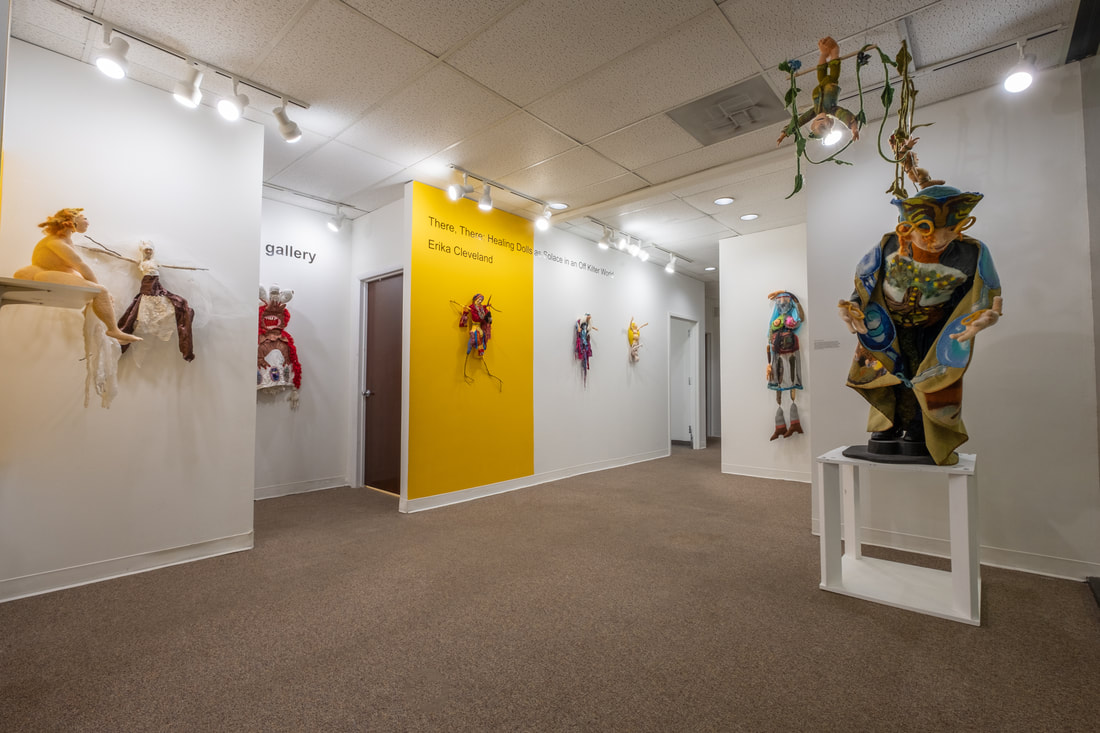
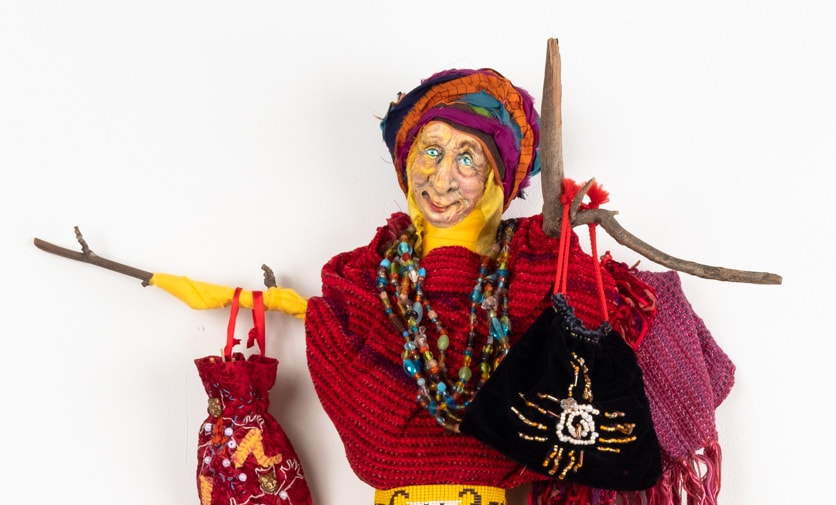
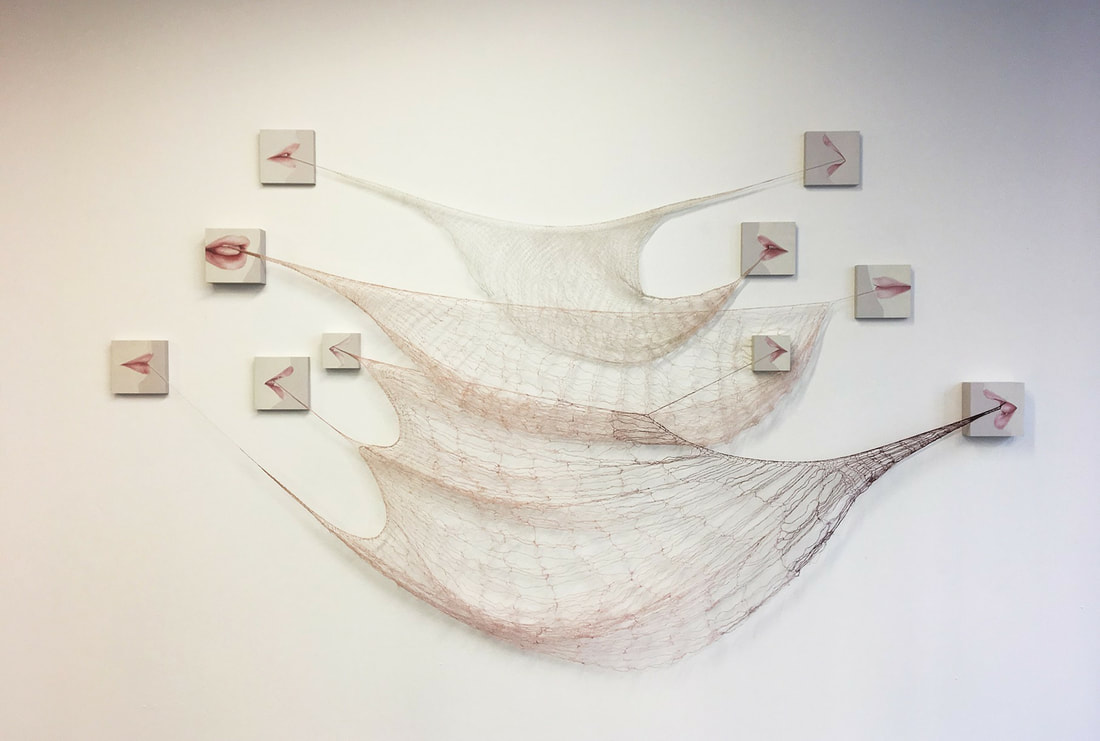
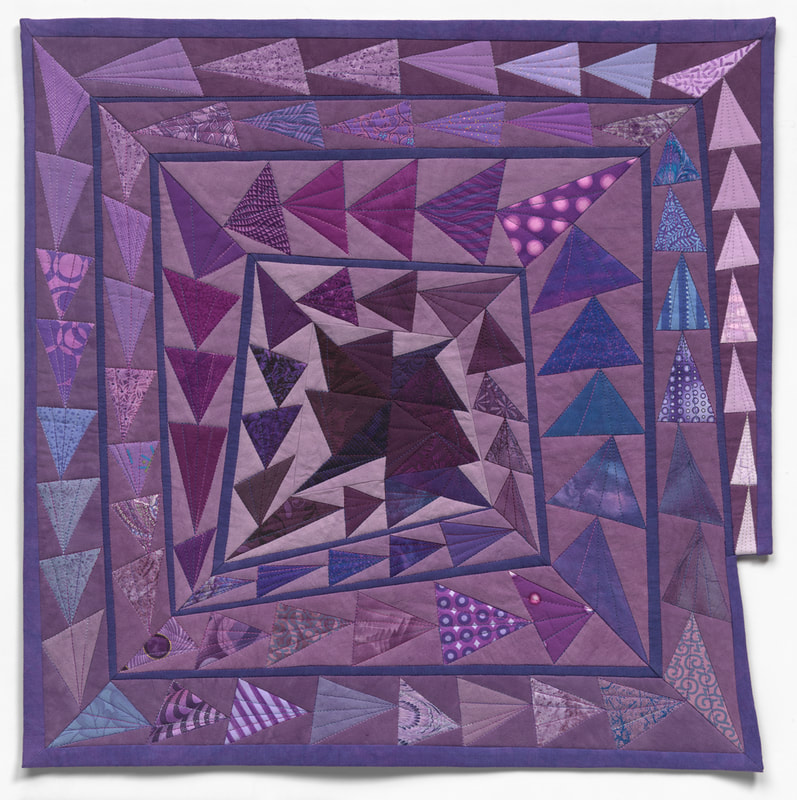
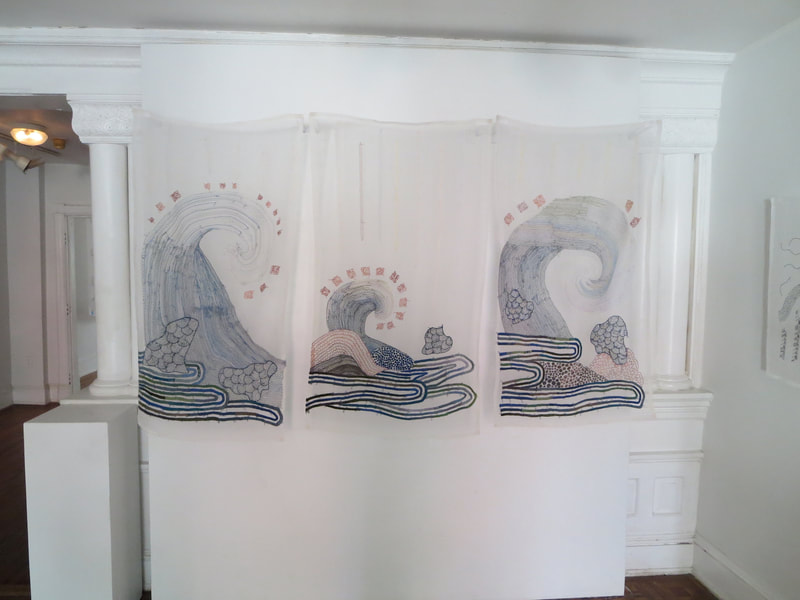
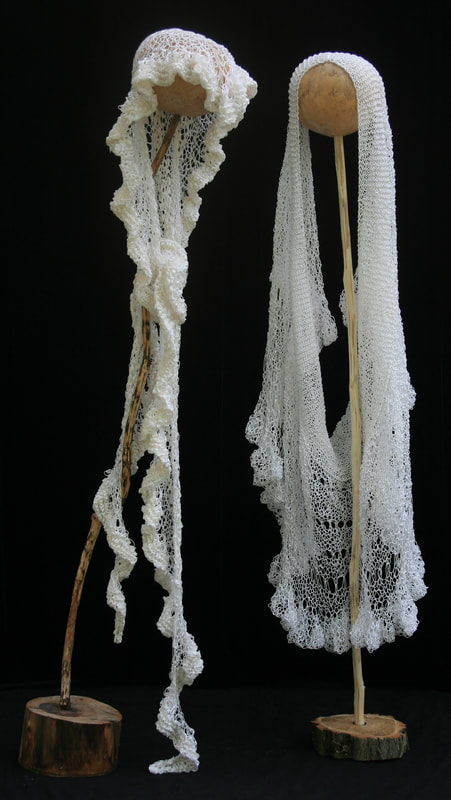
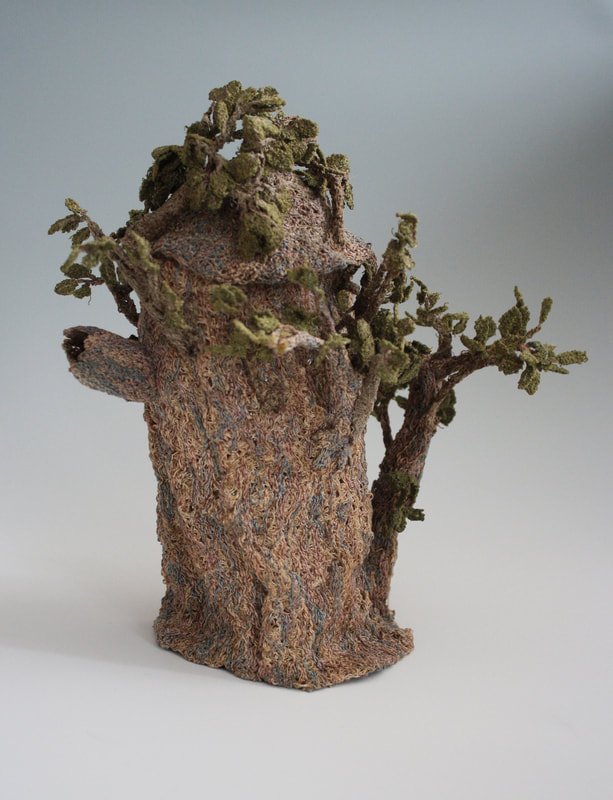
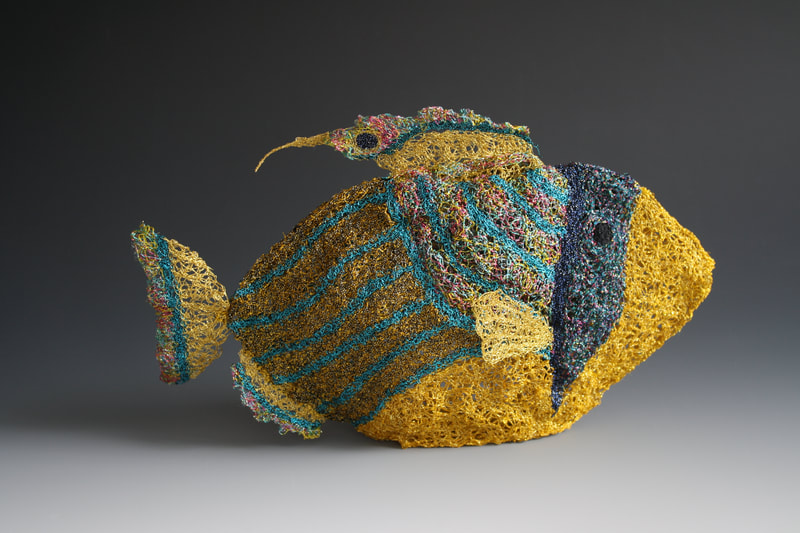

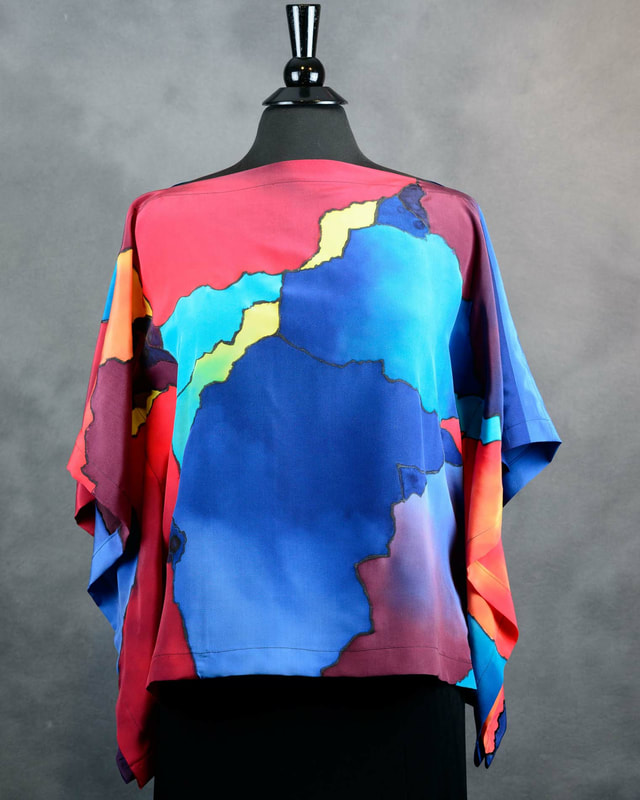
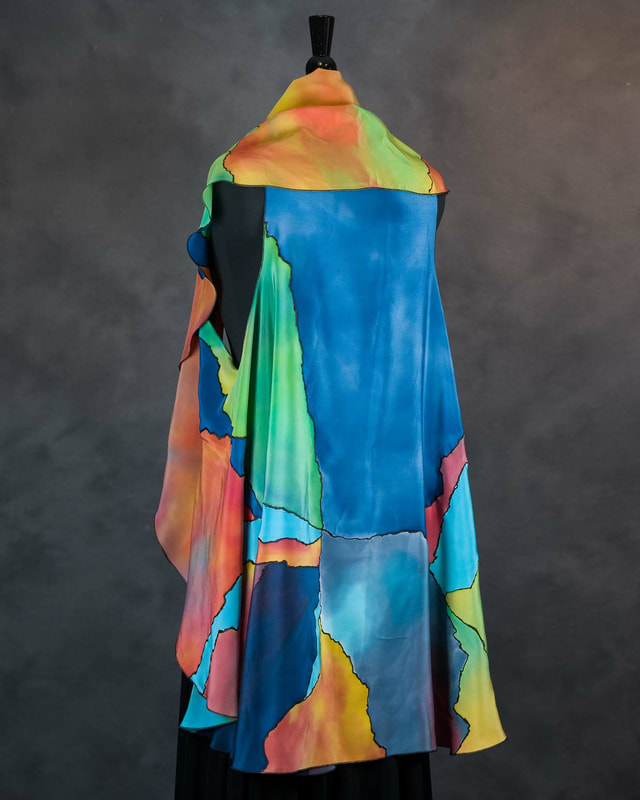
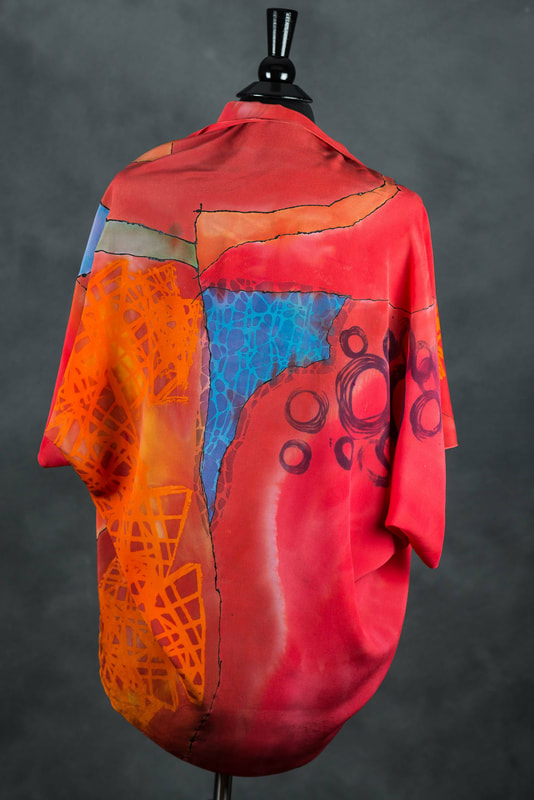
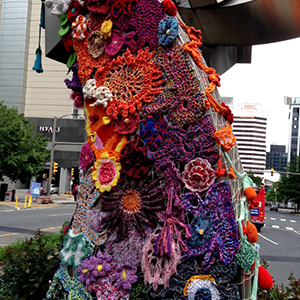
 RSS Feed
RSS Feed